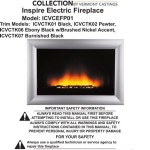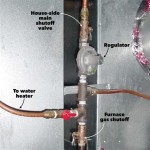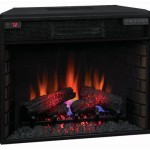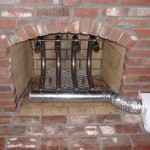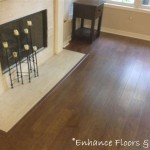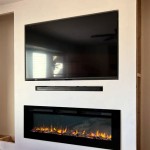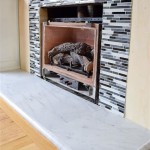Understanding Fireplace Iron Grates: Functionality, Types, and Maintenance
Fireplace iron grates are essential components of traditional wood-burning fireplaces. They serve several fundamental purposes, contributing to both the efficiency and safety of the fire. This article will delve into the functionality of fireplace iron grates, explore the different types available, and provide guidance on proper maintenance, ensuring optimal performance and longevity.
The primary function of a fireplace grate is to elevate the firewood from the floor of the fireplace. This elevation creates an air gap beneath the wood, allowing air to circulate more freely around the logs. This increased airflow is critical for efficient combustion, resulting in a hotter, cleaner burn. Without a grate, the bottom logs would be suffocated, leading to a smoldering fire with reduced heat output and increased smoke production.
In addition to improving airflow, the grate helps to contain the firewood within the fireplace. This containment prevents logs from rolling out onto the hearth, a serious safety hazard. By keeping the fire contained, the grate also helps to direct heat towards the room, maximizing the radiant heat benefit of the fireplace.
Furthermore, fireplace grates facilitate ash management. As wood burns, ash accumulates at the bottom of the fireplace. The grate allows the ash to fall through, creating a cleaner burning surface for the remaining wood. This also makes it easier to remove the ash from the fireplace when necessary, simplifying maintenance.
Optimizing Airflow for Efficient Burning
The design of a fireplace iron grate significantly impacts its ability to optimize airflow. Grates with wider spacing between the bars allow for greater airflow beneath the wood. However, overly wide spacing can also allow smaller pieces of wood to fall through, negating some of the benefits. The ideal spacing is a balance between maximizing airflow and providing sufficient support for the firewood.
The height of the grate is another important factor. A higher grate provides more space beneath the wood, which can further enhance airflow. However, a grate that is too high may cause the fire to burn too rapidly, leading to increased fuel consumption. The appropriate height depends on the size of the fireplace and the typical size of the firewood used.
Some grates are designed with angled bars, which further promote airflow around the wood. These angled bars help to direct air upwards, towards the flames, creating a more efficient and consistent burn. The angle and placement of these bars are carefully considered to optimize the combustion process.
The material and construction of the grate also play a role in airflow. Grates made from high-quality iron are more durable and resistant to warping, which can affect their ability to evenly support the wood and maintain proper airflow. A well-constructed grate will maintain its shape and structural integrity over time, ensuring consistent performance.
Exploring Different Types of Fireplace Iron Grates
Fireplace iron grates are available in a variety of types, each designed to meet specific needs and preferences. The most common types include traditional bar grates, arched grates, and heavy-duty grates. Understanding the characteristics of each type is essential for selecting the right grate for a particular fireplace.
Traditional bar grates are the most common and generally the most affordable option. They consist of a series of parallel iron bars welded together to form a rectangular or square shape. These grates are simple in design and effective at elevating the firewood and allowing for airflow. However, they may not be as durable as other types, especially when subjected to high heat and heavy loads.
Arched grates feature a curved or arched design, which can provide greater support for the firewood and prevent it from rolling off the grate. The arched shape also helps to distribute the weight of the wood more evenly, which can extend the lifespan of the grate. These grates are often preferred for larger fireplaces or for those who regularly burn large logs.
Heavy-duty grates are designed for maximum durability and can withstand extremely high temperatures and heavy loads. They are typically made from thicker iron and feature reinforced welds. These grates are ideal for those who frequently use their fireplace and require a grate that can stand up to heavy use. They are also suitable for fireplaces that are used for cooking.
In addition to these common types, there are also specialized grates designed for specific purposes. For example, some grates are designed to be used with gas logs, while others are designed to burn coal. It is important to select a grate that is specifically designed for the type of fuel being used.
Maintaining Fireplace Iron Grates for Longevity
Proper maintenance is crucial for extending the lifespan of a fireplace iron grate and ensuring its continued performance. Regular cleaning and inspection can help to prevent damage and ensure that the grate remains in good working condition. Neglecting maintenance can lead to premature wear and tear, requiring replacement of the grate.
After each use, it is important to remove any accumulated ash from the grate. Ash can retain moisture, which can accelerate corrosion. Use a fireplace shovel or ash rake to remove the ash and dispose of it properly. Avoid using water to clean the grate, as this can also promote corrosion.
Periodically inspect the grate for signs of damage, such as cracks, warping, or broken welds. If any damage is detected, it is important to repair or replace the grate as soon as possible. Using a damaged grate can be dangerous, as it may not properly support the firewood or contain the fire.
To prevent rust, it is recommended to apply a high-temperature paint or sealant to the grate. This coating will protect the iron from moisture and other environmental factors that can contribute to corrosion. Reapply the coating as needed, especially after cleaning the grate.
When not in use, store the grate in a dry place to prevent rust and corrosion. If storing the grate outside, cover it with a tarp or other protective material to shield it from the elements.
The frequency of cleaning and maintenance will depend on how often the fireplace is used. For those who use their fireplace regularly, more frequent maintenance will be necessary. However, even those who use their fireplace infrequently should still perform regular inspections and cleaning to ensure the grate remains in good condition.
By following these maintenance tips, it is possible to extend the lifespan of a fireplace iron grate and ensure its continued performance for many years. A well-maintained grate will provide years of reliable service, contributing to the enjoyment and safety of the fireplace experience.

Liberty Foundry 20 In Cast Iron Heavy Duty Fireplace Grate With 4 Clearance G800 Bx The Home Depot

24 Inch Fireplace Grate Cast Iron Log Rack Heavy Duty Steel Holder 3 4 Bar Fire Grates Wrought Wood Stove Firewood Burning For Indoor Outdoor Chimney Com
Eclectic Red Barn Antique Fireplace Grate Decorated For

Us Stove Company Small Fireplace Grate For Stoves In The Grates Department At Com

Liberty Foundry 27 In Cast Iron Heavy Duty Fireplace Grate With 2 Clearance G27 Bx The Home Depot

17 034 Wide Small Cast Iron Fireplace Wood Fire Grate

Liberty Foundry 33 In Self Feeding Cast Iron Fireplace Grate With 2 3 4 Leg Clearance X 29 15 At Tractor Supply Co

Vestal Traditional Fireplace Grate 30 Woodland Direct

Liberty Foundry 24 In Cast Iron Fireplace Grate With 2 5 Legs G1024 Bx The Home Depot

Fireplace Log Grates High Quality Friendly Fires

